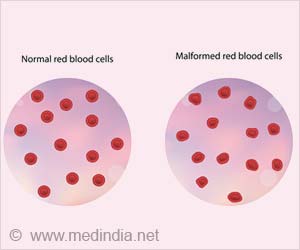Hip-hop dancing, especially breakin', is becoming a tool for disability advocacy. Discover the impact of the innovative Sound Pad project and its role in fostering inclusivity.
- Breakin' emerges as a powerful tool for disability advocacy and inclusivity in the performing arts
- The Sound Pad project, led by Nathan Geering and Dr. Simon Hayhoe, explores participatory dance education for individuals with visual impairments
- The study reveals breakin' as the most accessible dance form, showcasing its potential impact on spreading awareness of disability rights
The Sound Pad Project: Co-Creation of Breakin’, Dance Education, and an Inclusive Educational Technology
Go to source). Conducted by Nathan Geering, the Artistic Director of The Rationale Method, and Dr. Simon Hayhoe from the University of Exeter, the study focused on the impact of an innovative project called Sound Pad. This educational technology and choreography initiative aimed to create a participatory dance education model involving breakers, choreographers, and individuals with visual impairments. The Sound Pad project sought to encourage increased movement among people with visual impairments, fostering a sense of inclusion in mainstream dance culture and expanding their understanding of dance as an art form. The researchers also aimed to illuminate potential career pathways in choreography and music direction for individuals with disabilities. In particular, the project explored the accessibility and impact of breakin' compared to other dance styles for individuals with visual impairments.
Healing Power of Hip Hop Dancing
Hip-hop dancing, especially breakin', has been recognized for its positive effects on mobility, balance, stability, and overall well-being. Beyond physical benefits, it provides a unique opportunity for individuals to connect with their inner selves, express emotions, and build connections with peers. Breakin' has even been employed as a therapeutic tool to alleviate symptoms of depression, anxiety, and PTSD.The Sound Pad Project: Fostering Inclusivity
The Sound Pad project engaged breakers, choreographers, and participants with visual impairments in a collaborative effort to develop a form of participatory dance education. The overarching goal was to create an environment where everyone, regardless of visual ability, could actively contribute to and participate in dance culture.As part of the project, visually impaired choreographers showcased their work in Sheffield. Participants with visual impairments experienced three different dance styles without musical accompaniment and provided feedback on the accessibility of each. Notably, the responses indicated that breakin' was the most accessible of the three dance forms.
Breaking Barriers Through Dance
The three phases of practice occurred at the Sheffield Royal Society for the Blind, SNS Bradford, and 108 The Moor in Sheffield. Led by Nathan Geering, these sessions included both children and adults, with a total of five children and sixteen adult participants.Dr. Simon Hayhoe highlighted the unique aspects of the Sound Pad project, stating, “The Sound Pad project has created a unique form of co-creating, choreographing, and learning about dance sequences through imagining mobility and space, and through the co-creation of mobility.” The project encouraged participants to develop new forms of information exchange, fostering mutual understanding and inclusive technical and inclusive capital.
Imagining Dance Sequences Creatively
Visually impaired participant choreographers demonstrated the ability to imagine dance sequences creatively through touch, sound, and residual vision. They effectively communicated these visions to sighted dancers, emphasizing the potential for inclusive collaboration. Despite initial challenges in understanding each other's interpretations, the sessions facilitated mutual respect and comprehension.The technology and rationale method employed in the project facilitated communication, allowing participants to convey onomatopoeic sound and movement creatively. While challenges exist, the overall success of the project suggests that this innovative approach can contribute significantly to breaking down communication barriers between individuals with visual impairments and sighted dancers.
Expanding Possibilities Beyond Dance
Participants not only recognized the potential of Sound Pad for enhancing dance comprehension but also identified broader applications in mainstream sports, martial arts, fitness, and fashion. The project opened new avenues for technology-assisted movement comprehension and creative collaboration.Nurturing Inclusivity Through Hip Hop Dancing
In conclusion, the Sound Pad project showcased the potential of breakin' and innovative technology to foster inclusivity in the world of dance. The study revealed that breakin' was particularly accessible to individuals with visual impairments, emphasizing its potential as a tool for spreading awareness of disability rights.The project's success highlights the transformative power of hip-hop dancing, not only as a form of artistic expression but as a medium for breaking down societal barriers and promoting inclusivity. As we celebrate the healing and transformative aspects of breakin', it becomes clear that dance, when approached inclusively, can bring people together, irrespective of physical abilities.
The Sound Pad project serves as an inspiring example of how technology and creative methodologies can contribute to building a more inclusive world. By embracing the rhythm, movement, and collaborative spirit of breakin', we take a step closer to a society where everyone can participate, contribute, and thrive, breaking down barriers one dance move at a time.
Reference:
- The Sound Pad Project: Co-Creation of Breakin’, Dance Education, and an Inclusive Educational Technology - (https://academic.oup.com/book/55153/chapter-abstract/424070569)
Source-Medindia











